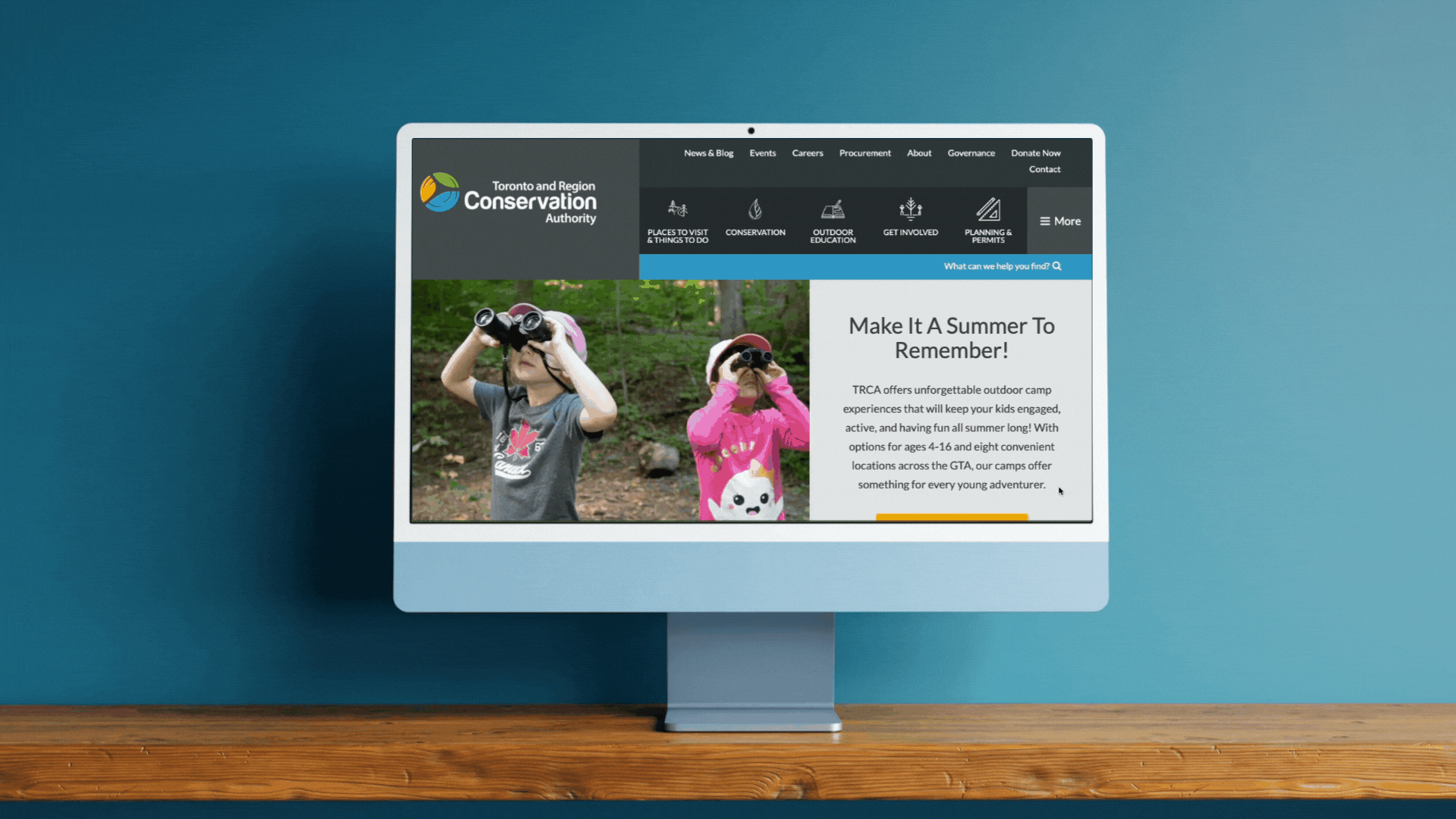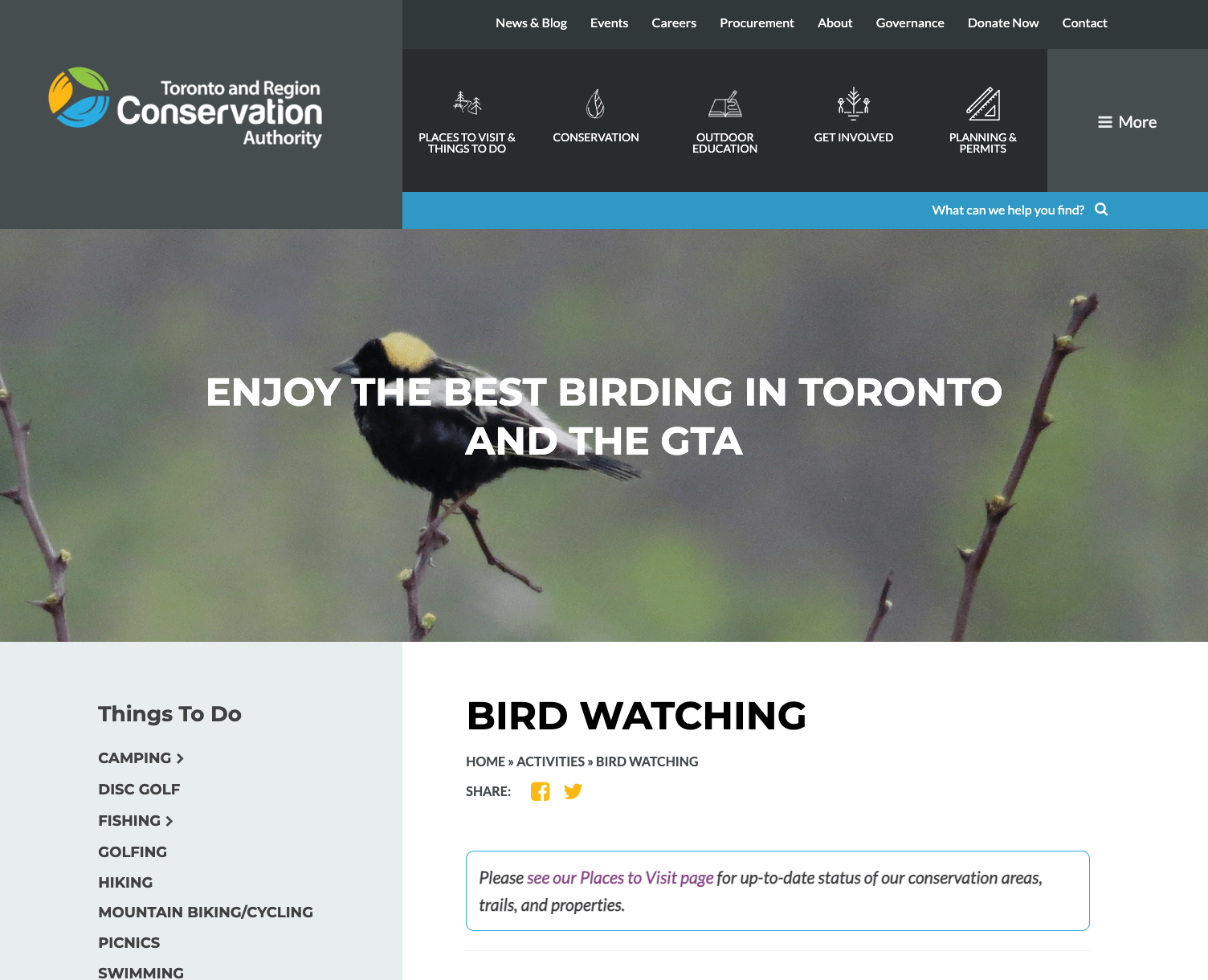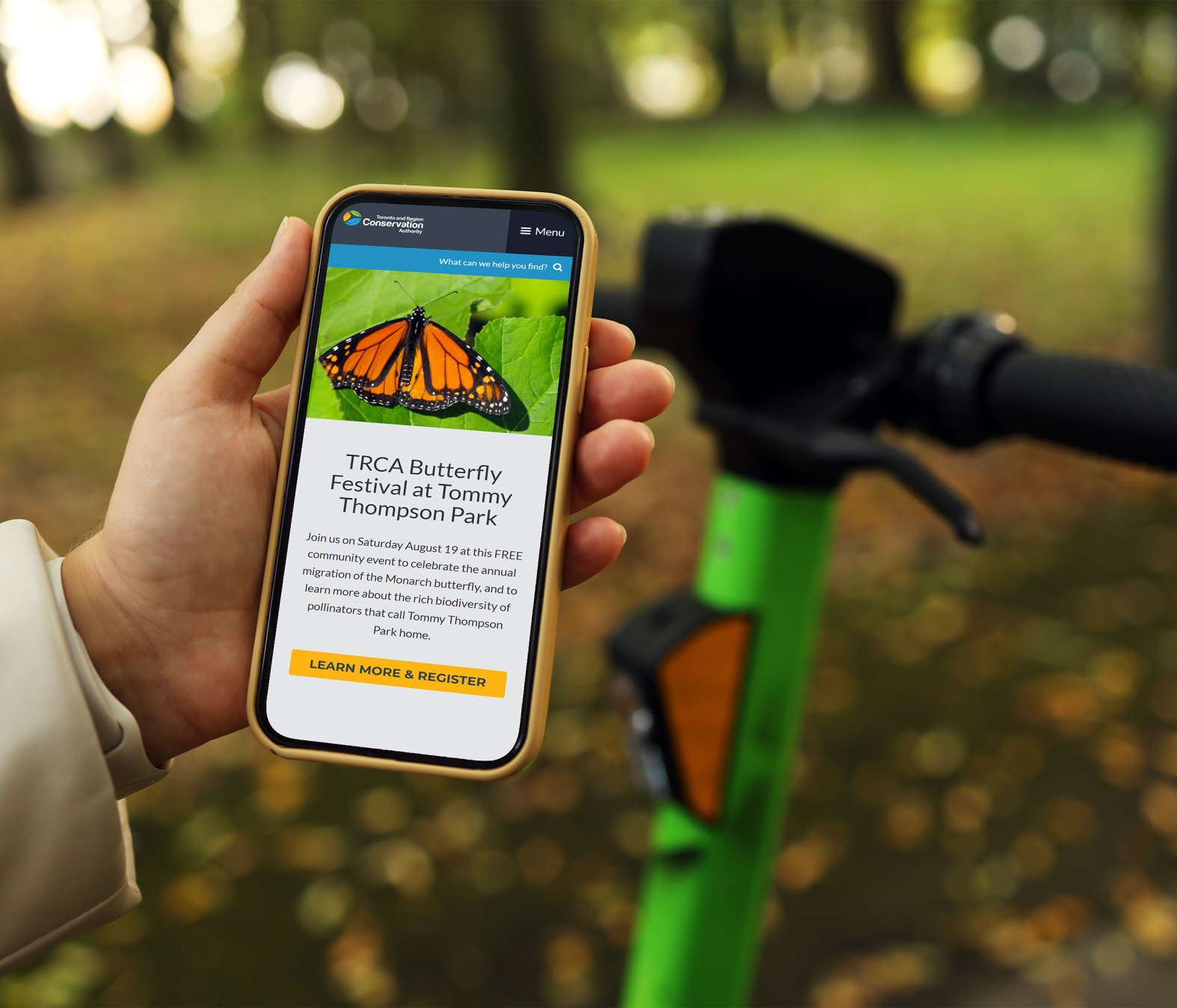Helping Torontonians engage with nature, more often

Toronto and Region Conservation Authority (TRCA)
The TRCA is one of Ontario’s 36 conservation authorities, is dedicated to safeguarding, enhancing, and restoring the natural integrity of the Toronto region’s waterways, land, and biodiversity through collaborative efforts, informed decision-making, and sustainable actions.
Navigation and content bloat were critical issues for the TRCA website. Users had difficulty finding information due to an overwhelming amount of redundant and outdated content. Additionally, the numerous departments within TRCA had different ways of referring to the audience and varying priorities regarding scope, creating confusion and inefficiencies. There were also frequent complaints from park guests about the information available on the website, indicating a need for significant improvements in user experience and content strategy.
To tackle the navigation and content bloat issues, we used personas to recruit multiple cohorts of real site users. This effort ensured we had sufficient numbers to conduct open and closed card sorts, followed by tree tests. The result was a vastly improved information architecture that helped users complete key tasks and significantly consolidated content, eliminating redundant information. We carefully monitored analytics and ascertained that high-traffic sections like Parks and Activities were easier to find. Additionally, we used the feedback widget to confirm that previously confusing sections, like Permits, were now more user-friendly.
During procurement, we discovered that the numerous departments had different ways to refer to the TRCA’s audience and divergent ideas about scope priority. Adam designed and facilitated interviews and workshops to produce definitive inter-departmental workflows and personas. This process brought clarity to the scope and yielded a common language to describe and refer to the audience. The personas were verified using Environics data and refined through results from external stakeholder interviews.
Parks staff reported that guests were complaining about information on the website. As part of regular maintenance, Adam reviewed the site’s analytics to determine which parks were most popular. Starting with these, he extended his analysis to all parks and activities, analyzing thousands of feedback pieces. Once categorized, we provided nine key recommendations to improve user experience.




The redesigned TRCA website featured a vastly improved information architecture, making it easier for users to find key information and complete tasks. Content consolidation eliminated redundancies, and user feedback indicated significant improvements in usability. The introduction of automated deployment systems streamlined development processes, leading to more efficient updates and maintenance. Overall, the user experience saw marked improvements, with fewer complaints from park guests and better accessibility of high-traffic sections.
